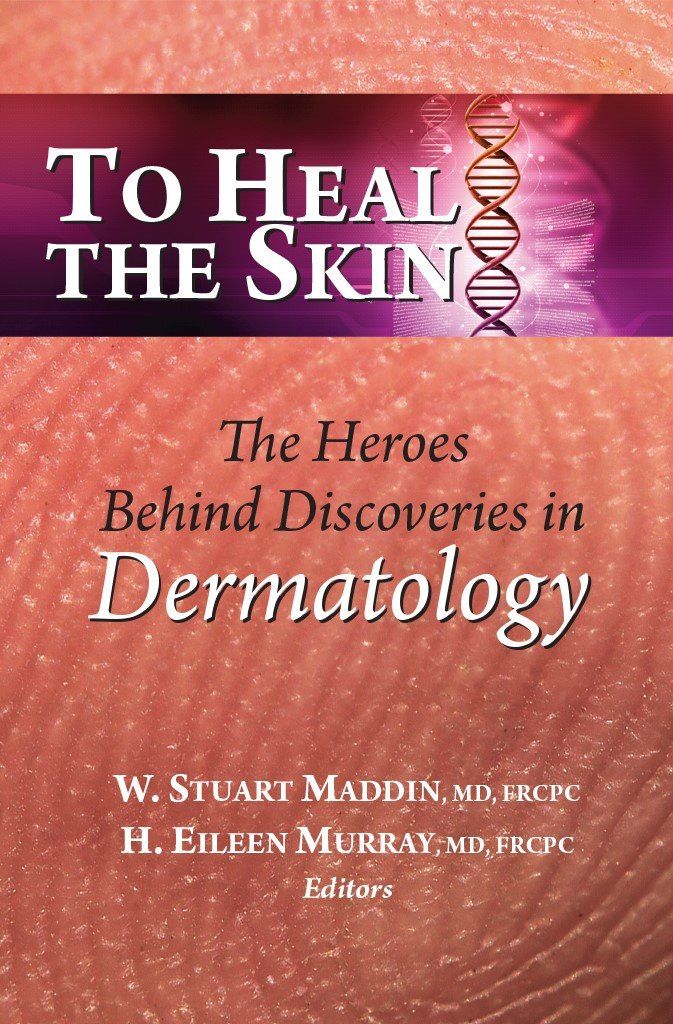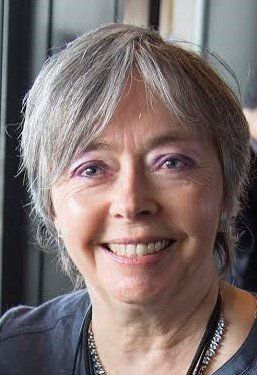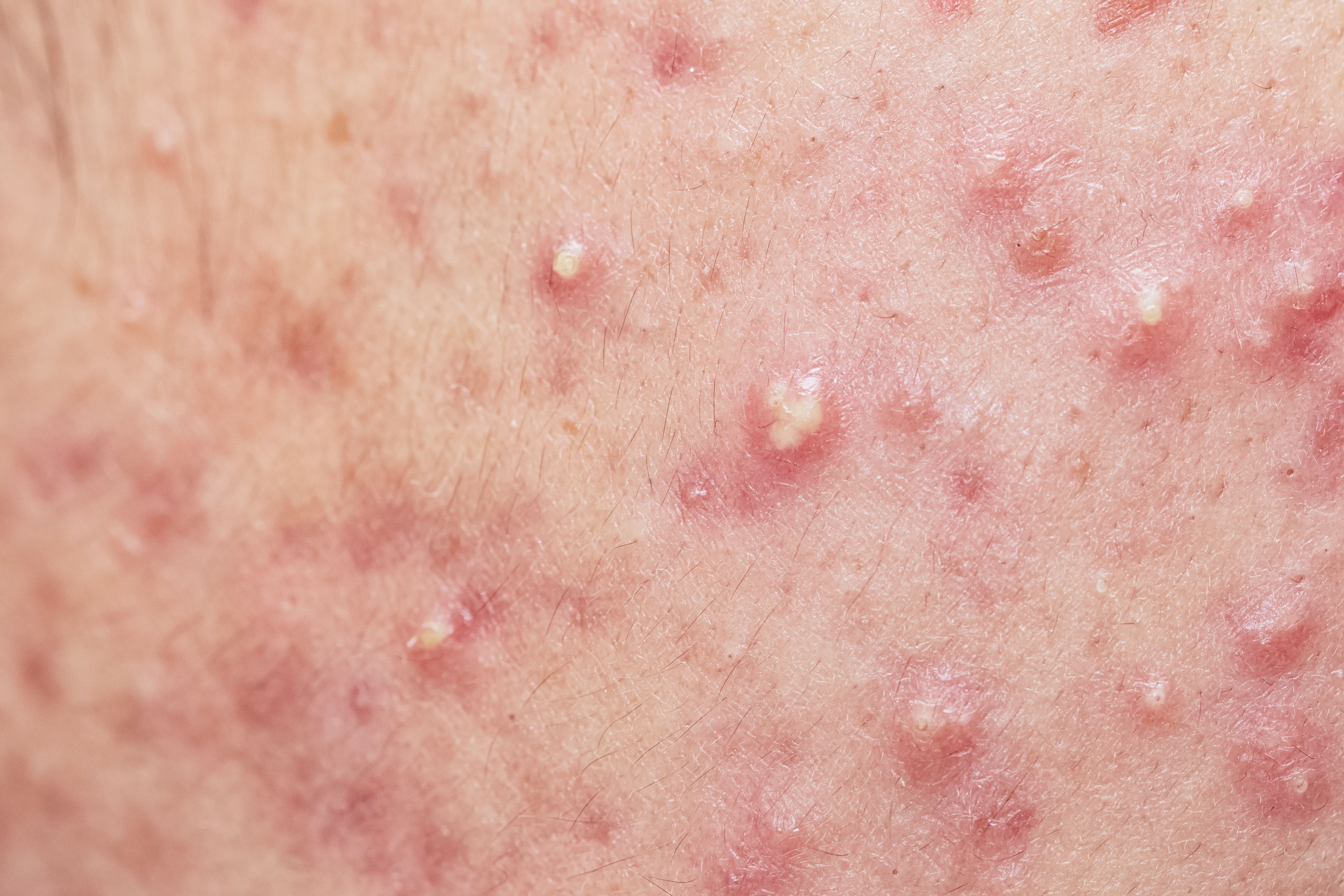- Case-Based Roundtable
- General Dermatology
- Eczema
- Chronic Hand Eczema
- Alopecia
- Aesthetics
- Vitiligo
- COVID-19
- Actinic Keratosis
- Precision Medicine and Biologics
- Rare Disease
- Wound Care
- Rosacea
- Psoriasis
- Psoriatic Arthritis
- Atopic Dermatitis
- Melasma
- NP and PA
- Skin Cancer
- Hidradenitis Suppurativa
- Drug Watch
- Pigmentary Disorders
- Acne
- Pediatric Dermatology
- Practice Management
- Prurigo Nodularis
- Buy-and-Bill
Article
Discoverers who advanced dermatology
Author(s):
The stories of the heroes behind these and other dermatologic therapeutic discoveries are recounted in the book To Heal the Skin: The Heroes Behind Discoveries in Dermatology edited by the late Stuart Maddin, M.D., F.R.C.P.C., professor emeritus at the University of British Columbia (UBC) in Vancouver, Canada, and a leader and pioneer in dermatology in Canada and internationally, and Eileen Murray, M.D., F.R.C.P.C., a dermatologist and adjunct professor at UBC. Learn more

Propranolol is now used to shrink infantile hemangiomas; benzoyl peroxide and isotretinoin are used to treat acne, and cantharidin is used to treat molluscum contagiosum.
The stories of the heroes behind these and other dermatologic therapeutic discoveries are recounted in the book To Heal the Skin: The Heroes Behind Discoveries in Dermatology edited by the late Stuart Maddin, M.D., F.R.C.P.C., professor emeritus at the University of British Columbia (UBC) in Vancouver, Canada, and a leader and pioneer in dermatology in Canada and internationally, and Eileen Murray, M.D., F.R.C.P.C., a dermatologist and adjunct professor at UBC.
Dr. Murray shared stories of her collaboration with Dr. Maddin, as well as excerpts and examples from the book, at Dermatology Update 2015. Each chapter of the book is an account of an innovation in dermatology that has been a significant treatment advance for patients.

Eileen Murray, M.D. F.R.C.P.C.Some of the discoverers wrote their own stories. Other stories were written by family members or practicing clinicians who knew or had worked with the heroes. The stories describe the motivations and research efforts of the heroes and how their efforts resulted in new therapies.
READ: Top five treatment mainstays: Ulcerated pediatric hemangiomas
In her presentation, Dr. Murray illustrated how the heroes, driven by unwavering self-belief and caring along with hard work and tenacity, "found treatments to help patients".
Some of the discoveries were accidental, such as the use of oral propranolol to shrink infantile hemangiomas. Christine Leaute-Labreze, M.D., a pediatric dermatologist in France, was treating the cardiac complications induced by oral corticosteroids with propranolol. She observed that the propranolol induced rapid shrinking of the hemangiomas. She and her co-investigators then proceeded with a clinical trial to confirm their observations. Similarly, the discovery of minoxidil, a potent vasodilator, as a therapy to grow hair was made when hypertensive patients, some of whom were bald, experienced hair growth while being treated with minoxidil for elevated blood pressure, Dr. Murray noted.
NEXT: Dr. William Pace, often referred to as the father of benzoyl peroxide
Dr. William Pace, often referred to as the father of benzoyl peroxide, was a dermatologist who practiced in London, Ontario, Canada. Dr. Pace had noted that patients with acne treated with chlorohydroxyquinolone ointment improved. The ointment, however, became unavailable and was also very greasy. He had a chemistry degree and set about testing each ingredient of the compound individually, and discovered that the active ingredient was 10% benzoyl peroxide.
Also read: Isotretinoin’s discovery and development
Two pharmacists worked alongside Dr. Pace, helping him to compound a cosmetically acceptable cream containing benzoyl peroxide and sulfur with which to treat acne.
"Dr. Pace did not take out a patent for his discovery and received no remuneration for this achievement," Dr. Murray said.
Gary Peck M.D., a dermatologist and senior investigator in the dermatology branch of the National Cancer Institute at the National Institutes of Health in Bethesda, M.D., was "interested in studying skin diseases that responded to Vitamin A". Dr. Peck was provided with 13-cis-retinoic acid by the pharmaceutical firm Roche. He discovered its efficacy in treating severe, nodulocystic acne, and it remains to this day the only systemic retinoid shown to be effective in treating this type of acne.
Dr. Niels Ryberg Finsen, a physician and scientist who was awarded the Nobel Prize in 1903 for his discovery of ultraviolet (UV) light and its ability to cure cutaneous tuberculosis, was stimulated to research light because of having an undiagnosed chronic illness now known as Niemann-Pick disease, which sapped his strength. He noticed he felt better when he was in the sun and also noticed animals were attracted to light.
Mary Wu Chang M.D., associate clinical professor of dermatology and pediatrics at the University of Connecticut School of Medicine, and Director, Pediatric Dermatology of New England in West Hartford, Conn., championed cantharidin as a painless treatment for children with molluscum contagiosum. She developed hearing loss early in her career and had years of frustration and self-doubt, but she was determined to continue her work.
"Despite numerous hurdles including skepticism, lack of space, withdrawal of funds, and the need to test hundreds of compounds to find the right one, they never gave up," Dr. Murray said. "You will find something to inspire in each story."
The book can be purchased at Tohealtheskin.com, and it will soon be available on Amazon.





